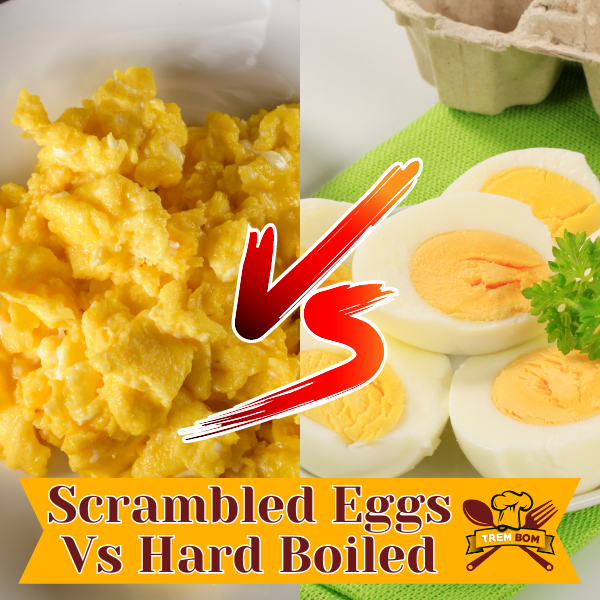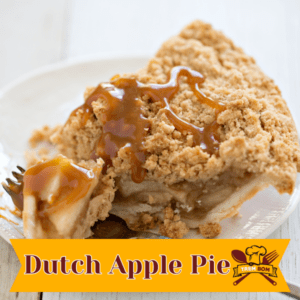
For egg enthusiasts, the debate between scrambled eggs vs hard boiled eggs has been a never-ending topic. Both styles have their unique taste and texture that make them a staple in breakfast meals. However, choosing between the two can be challenging, especially if you prioritize taste and health goals.
In this article, we’ll explore the differences between scrambled eggs and hard boiled eggs, their taste and texture, nutritional benefits, health considerations, cooking techniques, and versatility in the kitchen. By the end of this article, we hope you’ll have a better understanding of which egg style aligns best with your preferences. Let’s dive in!
Key Takeaways
- Scrambled eggs and hard boiled eggs have their unique taste and texture.
- The choice between the two depends on individual preferences and health goals.
- Both egg styles have nutritional benefits.
- Cooking techniques and versatility in the kitchen is a factor to consider.
- Experiment with different techniques to determine your favorite egg style.
How to Make Perfect Scrambled Eggs
Scrambled eggs are a breakfast favorite and making them can be a breeze with the right techniques. Follow our tips and achieve fluffy and mouth-watering scrambled eggs every time.
Choosing the Right Pan
The best way to cook scrambled eggs is by using a non-stick pan. This will help prevent the eggs from sticking and burning. Additionally, choose a pan that is the appropriate size for the number of eggs you’re cooking, to ensure even and thorough cooking throughout the dish.
Cooking Techniques for Scrambled Eggs
One of the keys to getting the perfect scrambled eggs is to take your time and cook them slowly over low heat. This will prevent the eggs from becoming dry and rubbery. Start by melting some butter or oil over low heat. Whisk the eggs in a separate bowl along with a pinch of salt, pepper, and herbs or spices of your choice. Pour the eggs into the pan and, using a spatula, gently scrape the eggs from the bottom of the pan as they cook. Keep stirring until they reach the desired consistency.
Adding Flavorful Ingredients
There are numerous ingredients you can add to your scrambled eggs to boost their flavor. Cheese, chopped herbs, diced ham, peppers, and onions are just some of the options. Be creative and try different combinations to find your favorite recipe.
Scrambled Eggs Recipe
| Ingredients | Instructions |
|---|---|
| 2 eggs | Crack two eggs into a separate bowl and whisk together. |
| 1 tbsp butter or oil | Melt butter or heat oil in a non-stick pan over low heat. |
| Salt, pepper, and herbs or spices | Season the eggs with salt, pepper, and your preferred herbs or spices. |
| Optional: 1/4 cup shredded cheese, chopped herbs, diced ham, vegetables, etc. | Add any additional ingredients you’d like to include. |
| Pour the egg mixture into the pan and cook slowly over low heat, stirring gently with a spatula until the eggs are cooked to your liking. | |
| Enjoy your perfect scrambled eggs! |
Now that you know the best way to cook scrambled eggs, it’s time to get cracking in the kitchen and try out these techniques. But remember, the key to achieving fluffy scrambled eggs is to take your time, cook them slowly, and add flavorful ingredients that fit your taste.
The Art of Hard Boiling Eggs
Hard boiled eggs are a versatile food that can be eaten as a snack, added to salads or sandwiches, or enjoyed at breakfast time. However, boiling eggs to perfection can be a challenging task. In this section, we’ll share our tips for achieving the perfect hard boiled egg every time.
Cooking Techniques for Hard Boiled Eggs
The first step to making the perfect hard boiled egg is selecting the right pot. You want a pot that will accommodate the eggs without them crowding each other and has enough depth to ensure the eggs are fully submerged in water. Once you have your pot, follow these steps:
- Place eggs in the pot with enough cold water to cover them by about an inch.
- Slowly bring the water to a gentle boil over medium-high heat.
- Once the water boils, remove the pot from heat and let the eggs sit in the hot water for the desired time.
- Drain the hot water, then transfer eggs into a bowl of ice-cold water. This will stop the cooking process and make them easier to peel.
- Remove eggs from the cold water and gently tap them against a hard surface to crack the shell. Peel the shell off carefully, starting from the larger end of the egg.
This simple technique will give you perfectly cooked hard boiled eggs every time.
Tips for Boiling the Perfect Hard Boiled Eggs
If you want to ensure that your hard boiled eggs come out perfect every time, follow these additional tips:
- Use eggs that are at least a week old (fresh eggs may be difficult to peel).
- Be sure to start with cold water to prevent shells from cracking as the water heats up.
- Set a timer to ensure that you don’t overcook or undercook the eggs. Typically, 8-10 minutes of cook time are sufficient for the desired yolk texture.
- Use a strainer or slotted spoon to remove the eggs from the hot water. This will prevent unnecessary cracking and make them easier to handle.
Hard Boiled Eggs Recipe
Looking for a tasty way to enjoy your perfect hard boiled eggs? Try our recipe for Egg Salad:
Ingredients:
- 6 hard boiled eggs, peeled and chopped
- 1/4 cup mayonnaise
- 1/4 cup plain Greek yogurt
- 1 tablespoon Dijon mustard
- 1 tablespoon lemon juice
- 1/4 teaspoon paprika
- 1/4 teaspoon salt
- 1/4 teaspoon black pepper
- 1 green onion, chopped
Instructions:
- Mix together mayonnaise, Greek yogurt, Dijon mustard, lemon juice, paprika, salt, and pepper in a bowl.
- Stir in chopped eggs and green onion until well combined.
- Chill the mixture in the fridge for at least 30 minutes.
- Serve on bread, crackers, or as a salad topping.
Hard boiled eggs are an easy and nutritious food to add to your diet. With our tips and techniques, you can make perfect hard boiled eggs at home every time.
Scrambled Eggs: Taste and Texture
Scrambled eggs are the perfect blank canvas for adding flavor and texture to your breakfast. One of the key differences between scrambled and hard boiled eggs lies in their taste and texture.
Scrambled eggs have a creamy and savory flavor with a light and soft texture. This is due to the way the eggs are cooked, with continued stirring and folding to create small, tender curds. The addition of milk, cream, or cheese can further enhance their richness and creaminess.
A Note on Overcooking
One important thing to keep in mind when cooking scrambled eggs is that they can quickly become overcooked and dry if left on the heat for too long. To avoid this, be sure to remove your eggs from the heat when they are still slightly underdone, as they will continue cooking with residual heat and reach the perfect consistency.
Scrambled eggs are a versatile and delicious breakfast option, perfect for pairing with toast, bacon, and your favorite toppings or spices.
Hard Boiled Eggs: Taste and Texture
Hard boiled eggs have a firm and smooth texture that comes from cooking them in their shell using boiling water. Their mild and satisfying flavor is versatile and can be enjoyed on its own or in several dishes. But how do they compare to scrambled eggs?
While scrambled eggs have a light and soft texture, hard boiled eggs offer a more substantial and robust bite. They are a perfect addition to salads and sandwiches, and can even be transformed into an egg salad or a deviled egg.
Moreover, hard boiled eggs are an excellent option for those who prefer their eggs without the addition of oil or butter. They are cholesterol-free and a good source of protein, making them a perfect breakfast or snack option for weight watchers or those with specific health goals.
So, if you’re more into firm bites and versatile flavors, hard boiled eggs might be your go-to option.
Nutritional Comparison
As we compare scrambled eggs vs hard boiled eggs, it’s crucial to consider their nutritional benefits. Both egg styles are excellent sources of protein, vitamins, and minerals that play a vital role in maintaining our health. However, cooking methods and preparation can affect their nutritional value. Let’s explore the differences between scrambled eggs and hard boiled eggs:
| Scrambled Eggs | Hard Boiled Eggs | |
|---|---|---|
| Calories per 100g | 149 kcal | 155 kcal |
| Protein per 100g | 12.56g | 12.58g |
| Total Fat per 100g | 10.86g | 11.03g |
| Carbohydrates per 100g | 0.67g | 0.56g |
| Cholesterol per 100g | 457mg | 373mg |
| Vitamins and Minerals per 100g |
|
|
As you can see, both scrambled eggs and hard boiled eggs are relatively similar from a nutritional standpoint. However, there are some slight differences in calorie count, cholesterol levels, and the specific vitamins and minerals they contain. For example, scrambled eggs have higher cholesterol levels, while hard boiled eggs provide more vitamin B12 per serving.
Ultimately, the choice between scrambled eggs or hard boiled eggs comes down to personal preference and health goals. However, it’s essential to note that eggs are a nutrient-dense food that can be part of a healthy and balanced diet.
Health Considerations
When it comes to scrambled eggs vs hard boiled eggs, your choice may impact your health in various ways. Let’s take a closer look at some of the health considerations associated with each egg style:
Cholesterol Levels
Scrambled eggs are often linked to a higher cholesterol content due to the use of butter or oil in the cooking process. This may be a concern for those with high cholesterol levels or a family history of heart disease. On the other hand, hard boiled eggs do not require additional fat, making them a better choice for those concerned about their cholesterol intake.
Digestion
Some people may experience digestive issues with scrambled eggs, particularly if they consume them with butter or milk. Hard boiled eggs, being a simpler and less processed food, are generally easier to digest and less likely to cause stomach discomfort.
Protein Absorption
Research shows that the way eggs are cooked can impact how well our bodies absorb their protein content. While both scrambled and hard boiled eggs offer high-quality protein, the protein in raw or undercooked eggs may not be as readily absorbed. To ensure optimal protein absorption, it’s recommended to cook eggs thoroughly, whether you prefer scrambled or hard boiled.
Ultimately, the choice between scrambled eggs and hard boiled eggs may depend on your individual health concerns and preferences. As with any food, moderation is key. Including both styles of eggs in your diet can offer a variety of nutritional benefits while satisfying your cravings for delicious egg dishes.
Versatility in Cooking
Whether you prefer scrambled or hard boiled eggs, both styles offer endless possibilities in the kitchen. Here are some creative ways to enjoy these versatile and delicious egg dishes:
Scrambled Eggs
- Add veggies: sauté mushrooms, onions, peppers, or spinach and fold them into your scrambled eggs for an extra dose of flavor and nutrition.
- Make a sandwich: stack scrambled eggs between two slices of bread or on top of an English muffin for a hearty breakfast sandwich.
- Whip up a wrap: roll scrambled eggs, cheese, and your favorite toppings into a tortilla for a tasty breakfast wrap.
Hard Boiled Eggs
- Make a salad: add sliced hard boiled eggs to your favorite leafy greens, croutons, and salad dressing for a protein-packed meal.
- Make a sandwich: slice hard boiled eggs and add them to your favorite sandwich for an extra boost of protein.
- Make a snack: sprinkle hard boiled eggs with salt and pepper or your favorite seasoning for a quick and easy snack.
As you can see, whether scrambled or hard boiled, eggs are a versatile ingredient that can be incorporated into a variety of dishes. So go ahead and experiment with your favorite cooking techniques and enjoy the delicious and nutritious benefits of eggs.
Which Style is Right for You?
After laying out all the facts, it’s time to decide which egg style suits you best – scrambled eggs or hard boiled eggs. Let’s go over some of the benefits and considerations for each.
Scrambled Eggs
Scrambled eggs offer a creamy and savory flavor, with a light and soft texture. They’re versatile, easy to cook, and can be customized with a variety of ingredients. If you’re in a hurry, scrambling eggs can be a quick breakfast option without sacrificing taste. However, keep in mind that scrambled eggs can be high in calories and cholesterol depending on the preparation method and ingredients used.
Hard Boiled Eggs
If you’re looking for a protein-packed snack to enjoy on-the-go, or as part of a salad or sandwich, hard boiled eggs might be the way to go. They offer a firm and smooth texture, with a mild, satisfying flavor. Hard boiled eggs are easy to make, can be stored in the fridge for later use, and are a great source of protein. However, overcooking can result in a rubbery texture, and some people may not enjoy the chalky yolk if overcooked.
Ultimately, the choice comes down to your personal tastes and goals. If you’re looking for a quick and easy breakfast option, scrambled eggs might be the way to go. If you prefer a protein-rich snack or addition to a meal, hard boiled eggs could be the right choice. Consider your overall diet, taste preferences, and nutritional goals to determine which egg style is right for you.
We hope this article helped you understand the differences between scrambled eggs and hard boiled eggs. You can’t go wrong with either one – experiment with different cooking techniques and enjoy the delights of both styles. Happy cooking!
Conclusion
So, which style of egg cooking is better – scrambled eggs or hard boiled eggs? The truth is, it depends on your preferences and goals. If you love a creamy and savory flavor, with a light and soft texture, scrambled eggs are the way to go. On the other hand, if you prefer a firm and smooth texture, with a mild and satisfying taste, hard boiled eggs are the ideal choice.
When it comes to nutrition, both styles of eggs have their benefits. Scrambled eggs offer a hearty protein boost, while hard boiled eggs are a low calorie option packed with essential vitamins and minerals. So, depending on your health goals, you can choose the style that aligns better with your diet plan.
It’s also important to consider the cooking techniques and versatility of these egg styles. You can enjoy scrambled eggs in various forms, such as omelets, frittatas, and more. Similarly, hard boiled eggs are a perfect addition to salads, sandwiches, and snacks on the go. So, both styles offer numerous possibilities to experiment with in the kitchen.
In conclusion, the debate between scrambled eggs vs hard boiled eggs is a matter of personal preference. We hope that this article has given you a better understanding of the differences between these two styles of egg cooking, and helped you make an informed decision based on your taste, health goals, and cooking preferences. Whether you prefer the lightness of scrambled eggs or the firmness of hard boiled eggs, both styles are delicious and versatile in their own ways. Happy cooking!
FAQ
What are the differences between scrambled eggs and hard boiled eggs?
Scrambled eggs are cooked by beating the eggs and cooking them in a pan, resulting in a creamy and savory texture. Hard boiled eggs, on the other hand, are cooked in boiling water until the yolk reaches the desired level of firmness.
What is the best way to cook scrambled eggs?
To achieve fluffy scrambled eggs, start by whisking the eggs in a bowl. Heat a non-stick pan over medium heat and add a little butter or oil. Pour the beaten eggs into the pan and continuously stir them with a spatula until they are lightly cooked and still slightly runny. Remove from heat and let the residual heat finish cooking the eggs.
How do I make perfect hard boiled eggs?
Place the eggs in a single layer in a saucepan and cover them with cold water. Bring the water to a boil over medium-high heat. Once boiling, reduce the heat and let the eggs simmer for 9-12 minutes, depending on your desired yolk consistency. Remove the eggs from the heat and transfer them to an ice bath to cool before peeling.
What is the taste and texture of scrambled eggs?
Scrambled eggs have a creamy and savory taste. When cooked properly, they have a light and soft texture that is comforting and satisfying.
What is the taste and texture of hard boiled eggs?
Hard boiled eggs have a mild and satisfying flavor. The yolk is firm and smooth, while the egg white has a slightly rubbery texture.
Which style is more nutritious, scrambled eggs, or hard boiled eggs?
Scrambled eggs and hard boiled eggs both provide valuable nutrients, including protein and essential vitamins. However, scrambled eggs typically retain more of their nutritional value as they are cooked quickly, whereas hard boiled eggs may lose some nutrients due to extended cooking time.
Are there any health considerations for scrambled eggs and hard boiled eggs?
The cooking method for scrambled eggs typically involves added fat, such as butter or oil, which may increase the calorie content. Hard boiled eggs, when consumed in moderation, are a healthier option as they are cooked without added fat. Keep in mind that individuals with high cholesterol levels may need to limit their intake of eggs, particularly the yolks.
How can I incorporate scrambled eggs and hard boiled eggs into different dishes?
Scrambled eggs can be enjoyed on their own, as a topping for toast, or incorporated into breakfast burritos or omelets. Hard boiled eggs are great for egg salads, deviled eggs, or as a protein-rich addition to salads and sandwiches.
Which egg style should I choose?
The decision between scrambled eggs and hard boiled eggs ultimately depends on your personal preferences. Consider the taste, texture, nutritional profile, and your cooking preferences to determine which option best suits your needs.






